Index


Review: Stylish and versatile
Fractal Design’s Define R3 case became quite popular in 2011 and it’s definitely a case worth loking at. The company tried to cater to users who like silent, tidy and stylish cases with plenty of room for 3.5’’ drives. Define R3 comes as successor to Fractal Design’s Define R2, and the company did its best to fix any shortcomings of the latter.
We tested Define R3 Black Pearl case. In case you don’t like black, or it simply doesn’t look right in your room, you can choose among the following colors: Arctic White, Black Pearl, Silwer Arrow, Titanium Grey. Note that the white Define R3 comes with white interior as well.
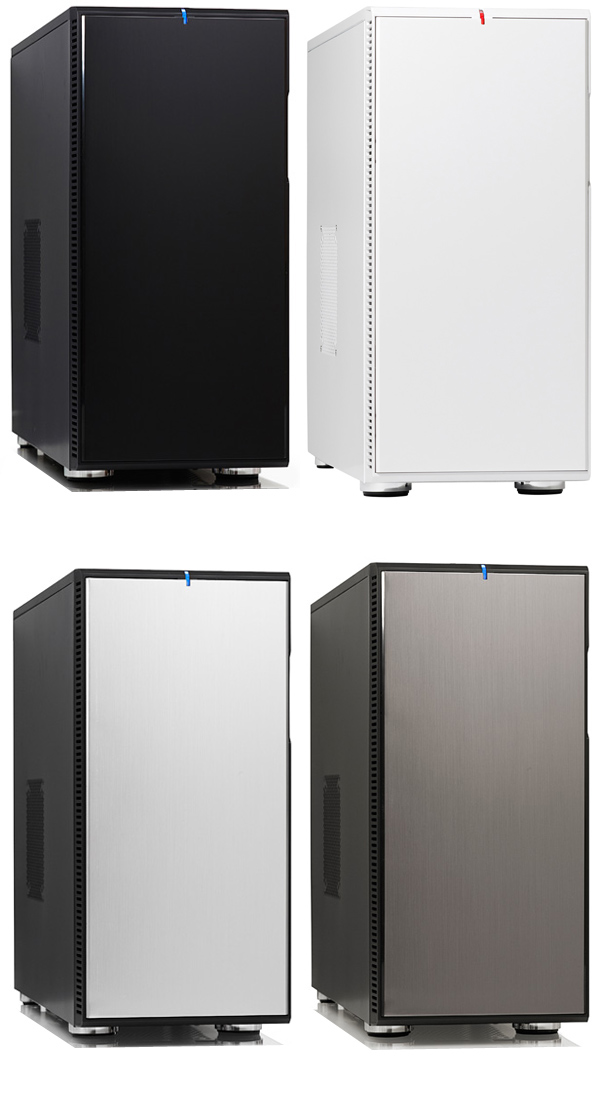
|
Model Number |
Define R3 Black Pearl |
||||||||||
|
Color |
All Black |
||||||||||
|
Material |
SECC |
||||||||||
|
Dimensions |
( W ) 207.40 x ( H ) 440 x ( D ) 521 mm |
||||||||||
|
Net Weight |
12.5 KG |
||||||||||
|
Motherboard Type |
Mini ITX, Micro-ATX, ATX |
||||||||||
|
5.25" Drive Bay |
2 x 5,25 inch bays, with 1x 5,25>3,5 inch converter included |
||||||||||
|
3.5” Drive Bay |
8x 3,5 inch HDD trays, compatible with SSD / HDD |
||||||||||
|
2.5” Drive Bay |
8x 3,5 inch HDD trays, compatible with 2.5” SSD/HDD |
||||||||||
|
Cooling System |
|
||||||||||
|
Expansion Slots |
7x expansion slots with sleek white painted brackets |
||||||||||
|
I/O Panel |
On top of front panel: 2x USB 2.0, 1x USB 3.0 and Audio I/O |
||||||||||
|
Power Supply Type |
Standard ATX PS2 / EPS 12V |
||||||||||
|
Maximum Compatibility |
CPU cooler height: 165 mm |
The packaging is simple but informative.

We didn’t even notice the accessories package and we initially thought that Fractal Design simply forgot about it. However, we found it in the top HDD tray inside. The case has a fan controller that can manage three fans.


The front panel seems simple enough but it is well made. Finishing touches are great and although the panel has a mirror finish, there aren’t that many reflections.
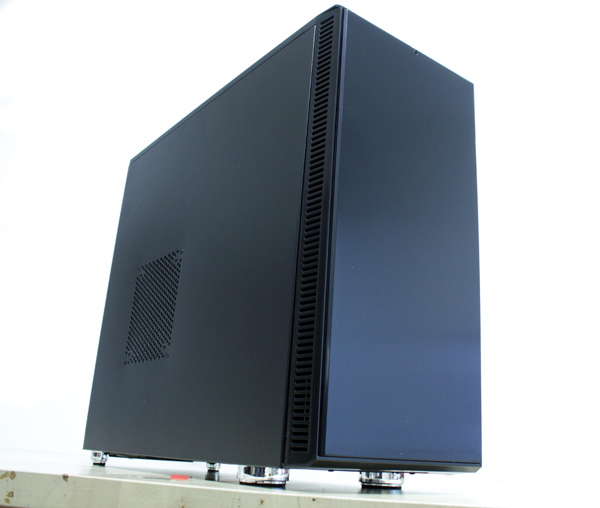
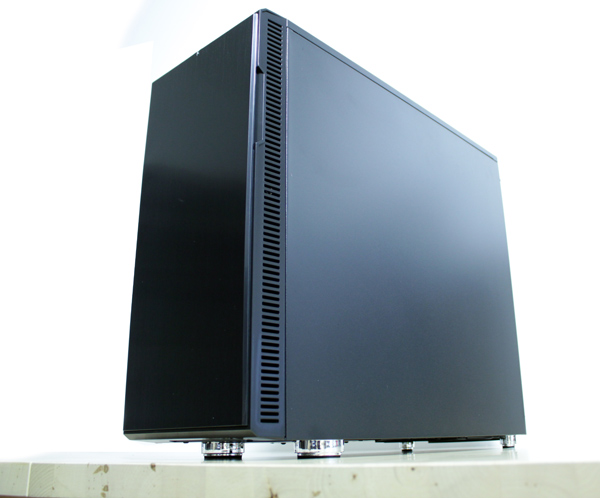
What you see on the picture are the plastic doors coated with aluminum film. Truth be told, the photos don’t do it much justice as it looks much better live.
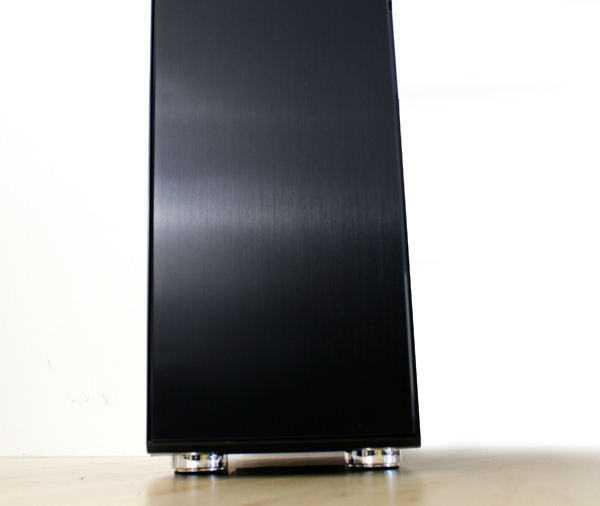
A light tug on the top-right part of the front panel will open the door, which opens to the left and cannot be flipped. Behind the door is a stock 12cm fan with additional room for another one. The front panel door has no holes on it so the fans draw air from holes on the sides.
The door has a layer of foam attached to it from the inside. As for the side panels, Fractal Design opted on harder and thinner material for sound isolation, in order not to waste space inside the case.
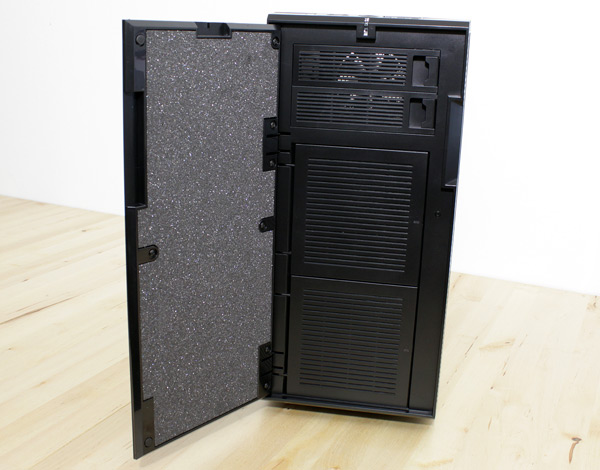
The door is held in place by strong magnets.
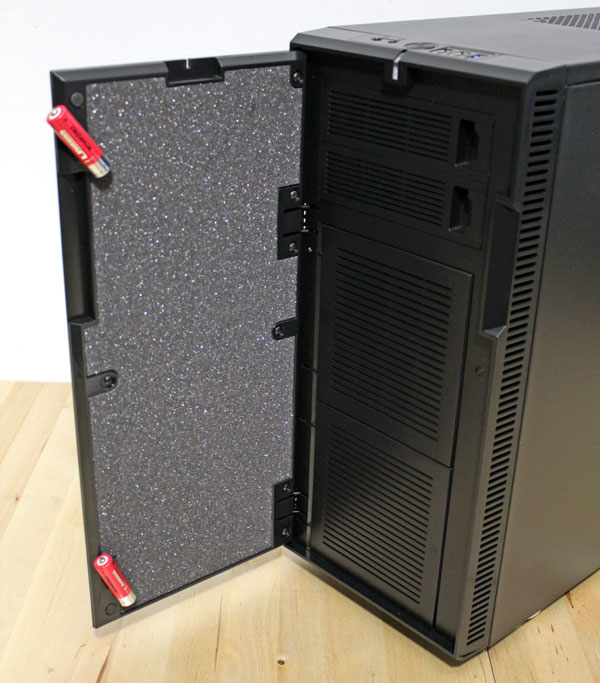
You can reach the front panel fan easy by opening the additional door inside. There’s no need to remove the entire panel in order to mount optical devices. The 5.25’’ covers can be removed easily, but you should take care in order not to break them. We applied a bit too much force and managed to break one clip.
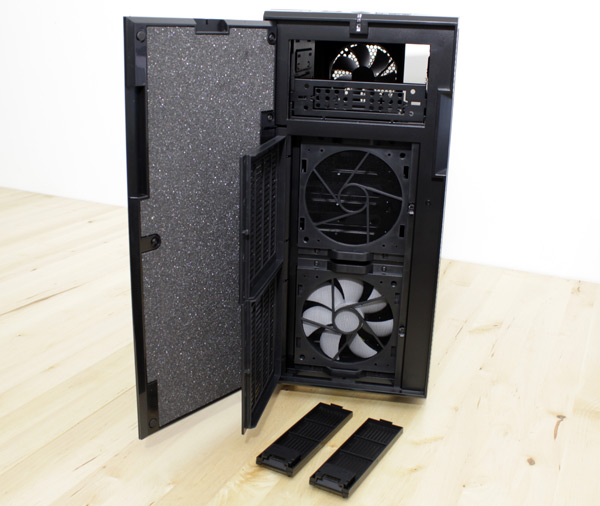
Define R3 comes with only two 5.25’’, but most users won’t need any more than that. In fact, we tend to hear about problems with lack of room for 3.5’’ drives much more than for 5.25’’ devices. Define R3 not only offers eight 3.5’’ slots by default, you can also turn one 5.25’’ slot into a 3.5’’ via the included adapter. Note that all the 3.5’’ are made to hold 2.5’’ drives as well.
The front panel fan isn’t attached directly to the chassis, but rather in a removable bracket secured with four screws.
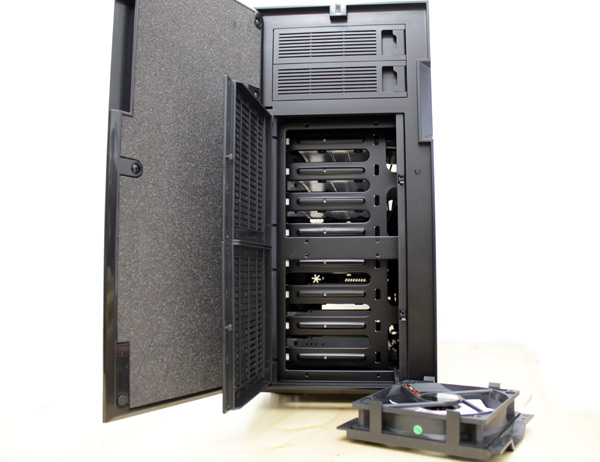
The fan holder is made of plastic and functions as a filter at the same time. We really liked this concept as users can clean the fan as well while cleaning the filter.
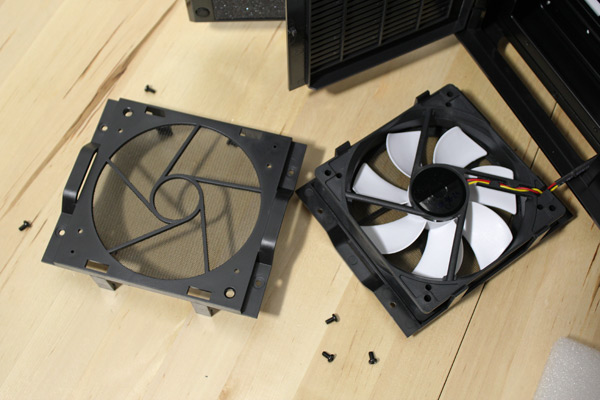
Define R3 Black Pearl comes stocked with two fans. The second fan is on the rear panel. Note that both fans run at 1350 rpm.
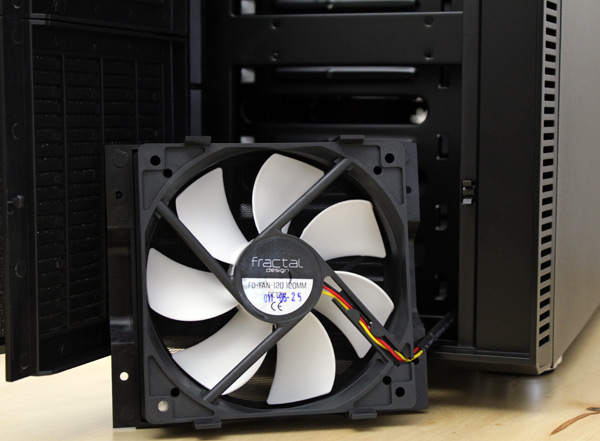
The reset key is hidden behind the door whereas the power key is on the top panel. Unfortunately, there are no e-SATA connectors but there is a single USB 3.0 (internal connector) and two USB 2.0 ones. In the centre of the panel is a LED lamp that glows blue when the computer is on.
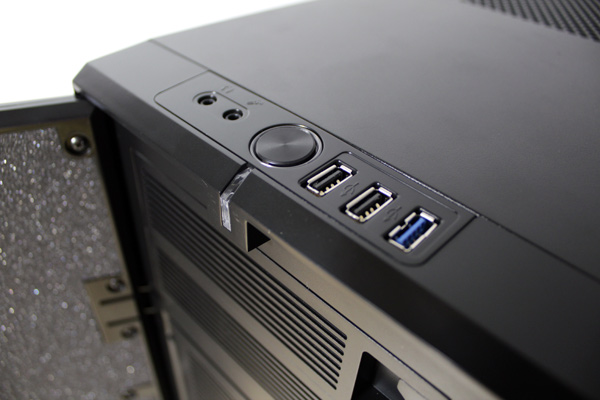
You probably noticed that Define R3 Black Pearl has two fan holes on the top panel, but a closer look reveals they are sealed from the inside. These two holes are there in case you decide to add more fans (120/140mm).
Many users like their cases silent so Fractal Design sealed all unused holes on top and side panels and called it ModuVent. In other words, if you want maximum performance, take the foam off and throw some fans in.
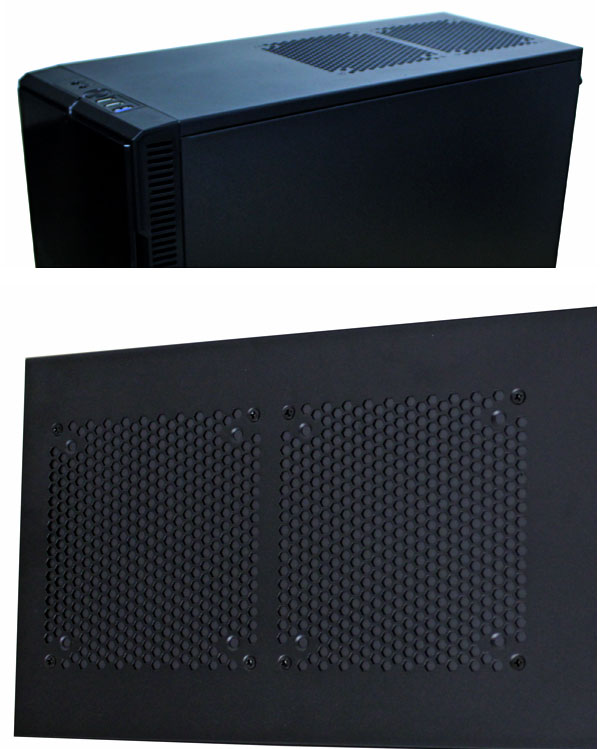
Fan controllers are usually placed on the front panel, but the foam inside the door prevented us from mounting our Scythe fan controller. This means that you’ll either have to resort to digital fan controllers or cut up some foam. Naturally, it’s much simpler to use the provided fan controller, which goes into expansion slots on the rear panel.
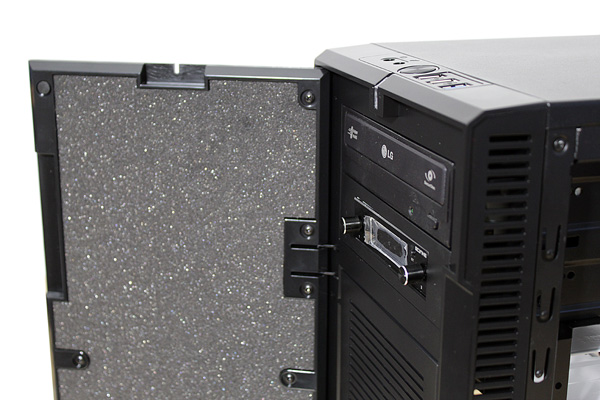
The left side panel holds an optional fan hole (120/140mm) whereas the right panel is fully closed.
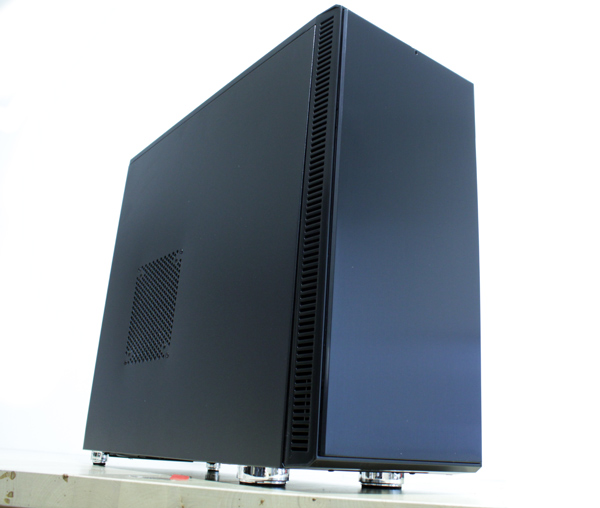
The left side is the so called ModuVent, which means that the company used removable seals to close optional holes, until you need to use them. This is how Fractal Design managed to make the case as silent as possible.
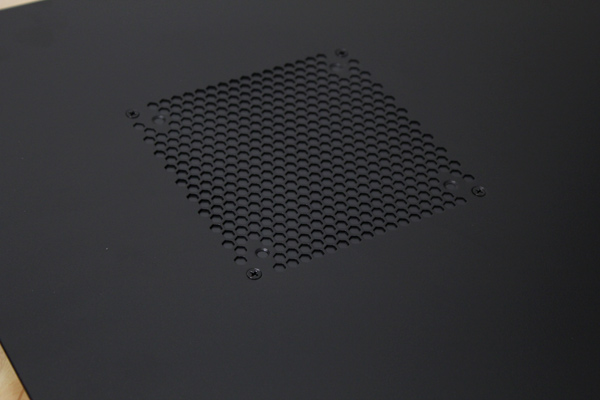
The following photo shows the sound isolation material in the Black Pearl. The side panels are tough and are easily taken off. They’re held in place by two thumb screws.

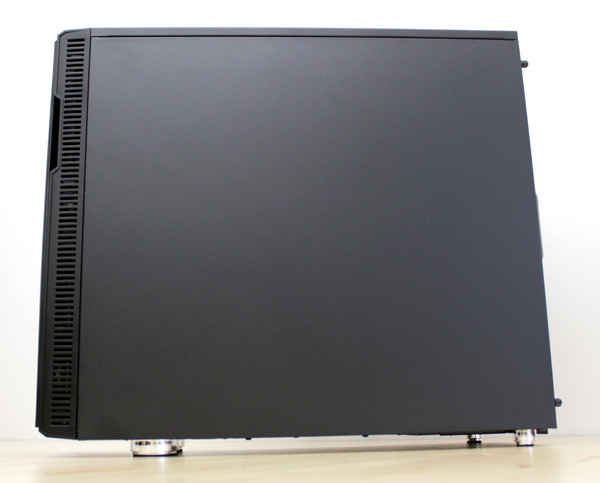
Define R3 Black Pearl has seven expansion slots and four holes for water cooling. A look on the rear panel reveals an important thing – the Define R3 is wider than classic midi-tower cases. The right side panel isn’t very close to the I/O panel, which is good as it means extra room for cable management. The expansion slot covers are fixed with thumb screws, which are also used to lock expansion cards. You can reuse the covers and the company made sure to improve the Define R2’s covers by including air inlets.
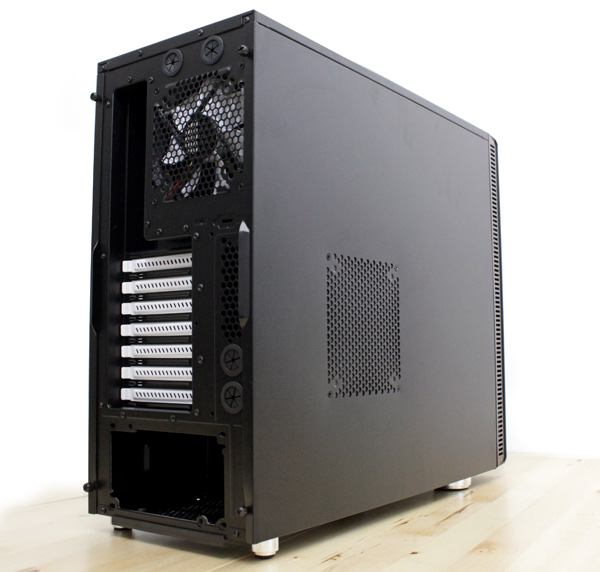
You’ll find dust filters on the bottom panel below the PSU. 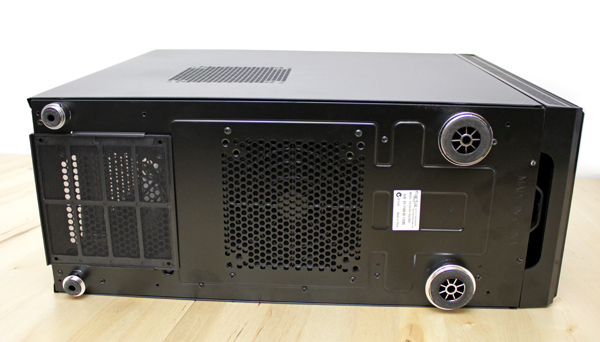
The bottom filter can be taken out for cleaning with a tug from the back of the case. It would perhaps be better if the filter had a small handle to make the task easier.

The feet are made with anti-vibration rubber coating underneath, and are stable and tall enough to allow the air to be drawn in from the bottom of the case. Although the plastic feet seem fine, they’re a bit funny as the rear ones are much smaller than the front ones.

The Define R3 Black Pearl packs enough room for mini-ITX, micro-ATX and ATX boards. At a glance, everything looks pretty nice. Fractal Design’s cases are recognizable for the white expansion slot covers and white fans. Furthermore, there are a few white details inside and we really liked the design in general.
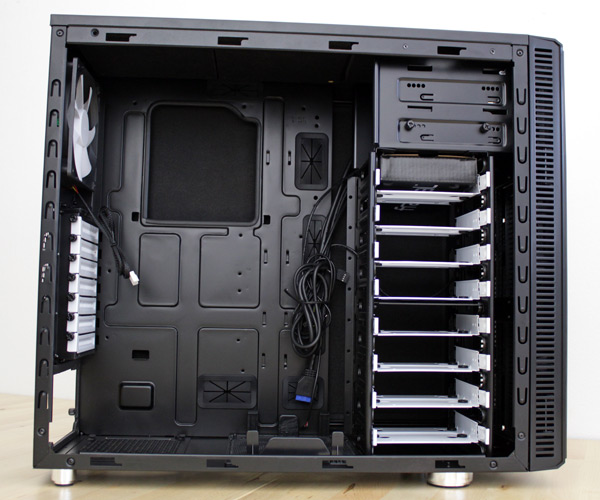
Define R3 is 521mm long but since the HDD cage is fixed, your graphics card should not exceed 29cm. However, this is enough for all standard high-end, single GPU graphics cards (HD 6970 is 27cm long).
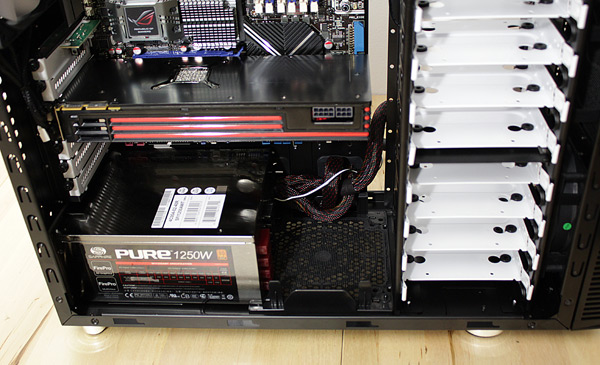
Our Define R3 took Asus’ Rampage II Extreme motherboard (269x305 mm, 10.6" x 12"). The case has a few cable management holes in the motherboard tray but, unfortunately, our Rampage II closed off most of them. However, the case is designed with such scenarios in mind so the cables can still be routed between the HDD cage and the tray.

The motherboard tray has a big CPU backplate cutout which will make swapping CPU coolers easy as pie.
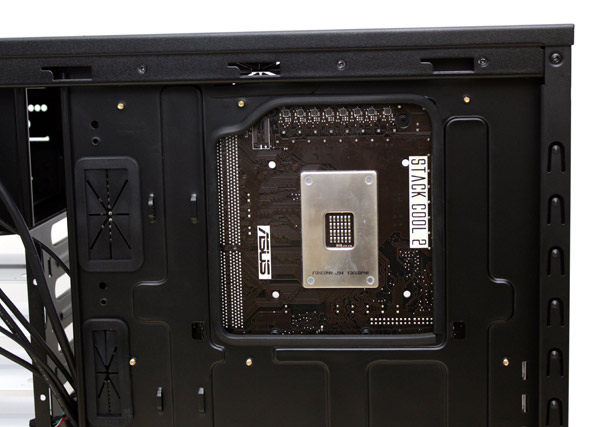
Fractal Design used rubber on cable management holes and the CPU backplate cutout, which is a really nice touch.
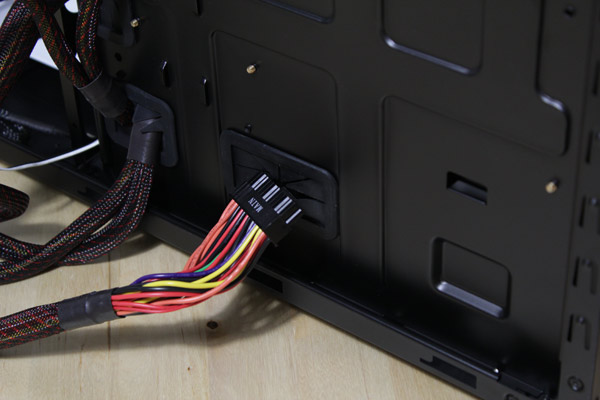
If we were to pick hairs, then we’d like to see the company implement something similar to what we’ve seen on the Trooper, picture below. Namely, the rubber parts are held in place by clips.
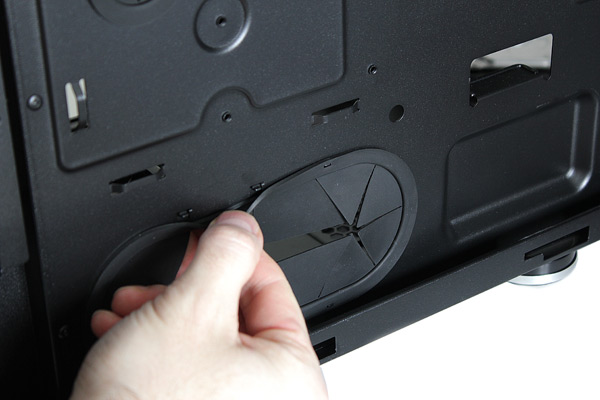
The case has a few notches for cable management on the back of the motherboard tray, but they are positioned a bit too close to each other. Again, we must mention the Trooper, as the case has a much better distribution of the notches (picture above).
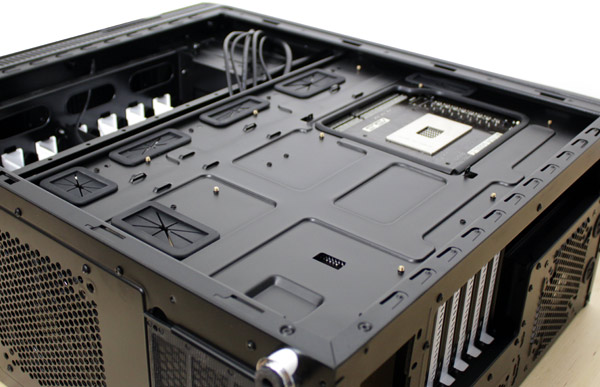
Above the CPU backplate cutout is a smaller but very practical hole for the CPU power cable.
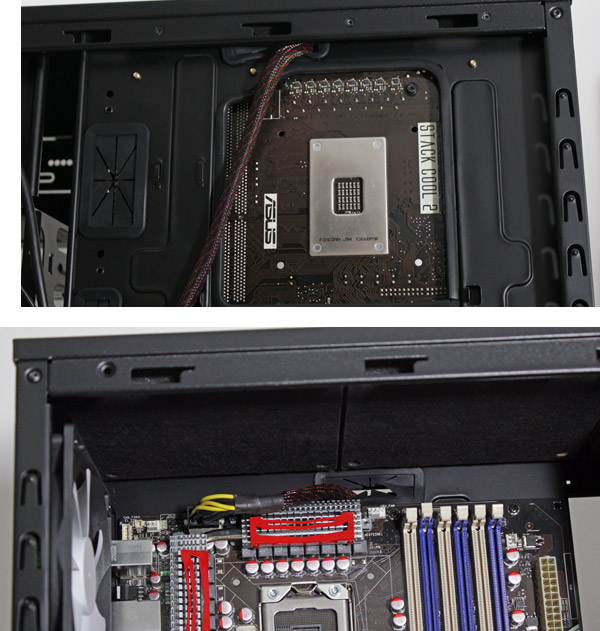
Define R3 is wider than most mid-tower computer cases, which means that it will easily take taller CPU coolers (up to 165mm).
The sound isolation material on the side panels is only a few millimeters thick so it won’t get in the way of coolers or make cable management difficult.

The exhausts on the top panel are closed, just like those on the left, but unscrewing four screws will make room for 12cm/14cm fan. What’s great about this case is that, although it aims for silence, it can easily be optimized for maximum airflow.
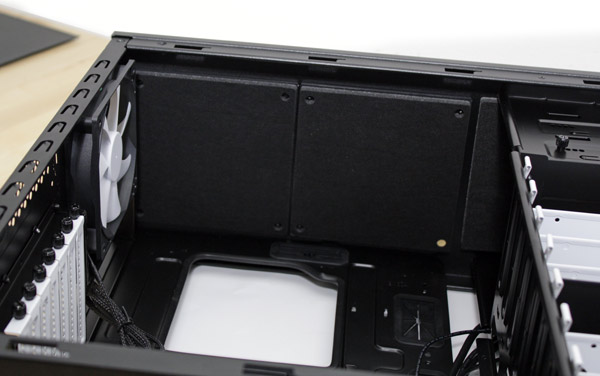
The front panel can be removed but mounting 5.25’’ drives will only require taking of the covers. Optical drives are fixed with thumb screws, as the company didn’t include a toolless mechanism. Most of the screws in the case are big-head ones, so you won’t be needing tools. We must admit we didn’t miss a toolless mechanism because screws beat badly implemented locking mechanisms any day.
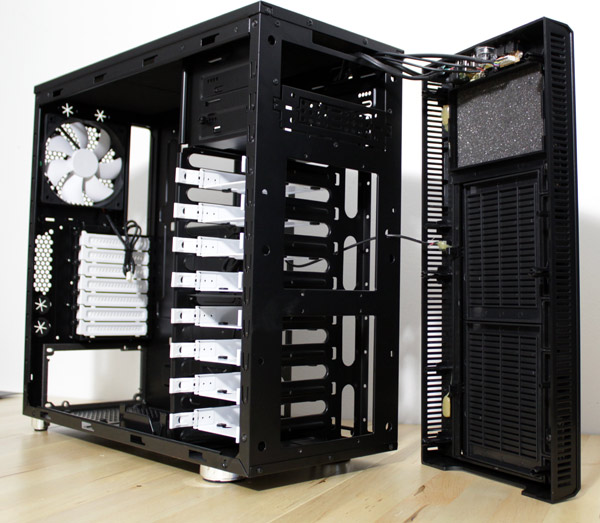

The 3.5’’ cage cannot be removed, but it’s very tough. You’ll find grommets in every bay but they’ll only work for 3.5’’ drives (2.5’’ SSD drives don’t make vibrations). Each of the bays will take 3.5’’ or 2.5’’ drives.
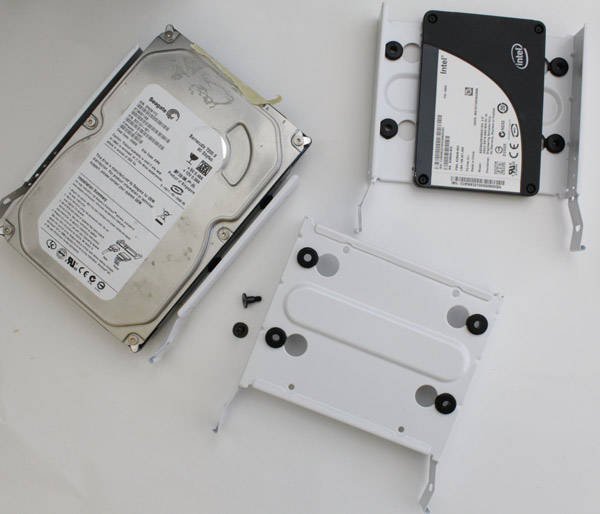
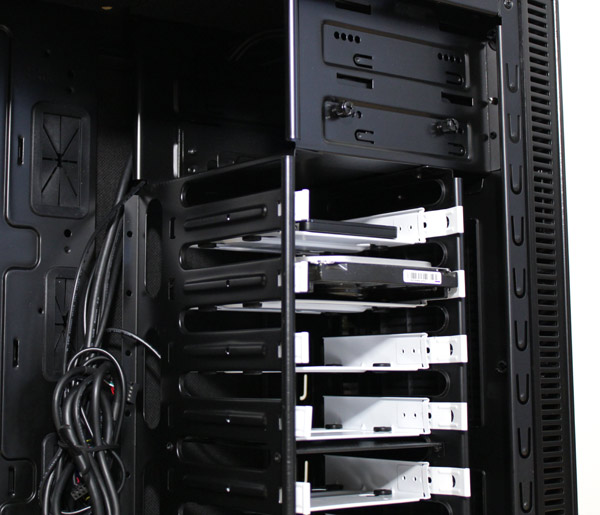
The PSU is mounted on the bottom and you’ll find a rubber seal for suppressing vibration noise. Pure 1250W is 19cm long so we had to take the dust filter out. However, standard PSUs will fit without problems.
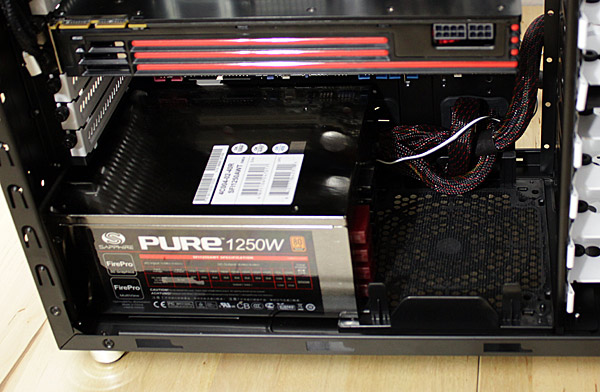
When running at maximum rpm, the fans aren’t quite what we’d call unbearably loud but they’re still audible. Thankfully, the fan controller can, and in our case did, take care of that as we lowered the rpm to make them barely audible.
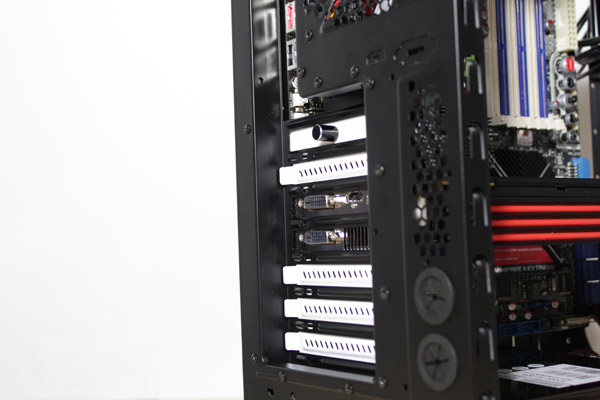
Fractal Design is one of computer case manufacturers who favor quality and functionality over pure quantity of features. Define R3 is built on the company’s Define R2 case, which was quite popular, but is getting a bit old. Define R3 comes with improved airflow, newer fans, better and thinner isolation material, bigger CPU backplate cutout to ensure maximum compatibility with motherboards, more cable management holes, improved finish, and more.
Where Define R3 really beats the rest of the competition is its versatility. The company calls it ModuVent design – air exhausts come sealed and with sound isolation but users can unseal them and improve airflow in a minute. Many manufacturers of silent cases opt out of having exhausts on top or side panels to make a case even quieter. Define R3, on the other hand, has two exhausts on the top panel and another optional one on the left. If users need more airflow – they can have it in minutes.
Define R3 comes with two fans that provide nice airflow, but are loud. However, you can make them quieter via the provided fan controller. You may need another one or two fans if you’re looking to build a high-end rig, but bear in mind that Define R3 Black Pearl will take as much as seven.
There’s room inside for high end rigs based on ATX motherboards. The case will take maximum 29cm graphics, which should be enough for most users. All standard single GPU graphics cards (including HD 6970 and GTX 580) are shorter than that. You can use CPU coolers up to 16.5cm tall, so most high end coolers are compatible as well.
Define R3 Black Pearl is black but you can choose between Arctic White, Black Pearl, Silver Arrow and Titanium Grey. Fractal Design really did a good job and we’ll remember Define R3 as one of the better computer cases in 2011.



